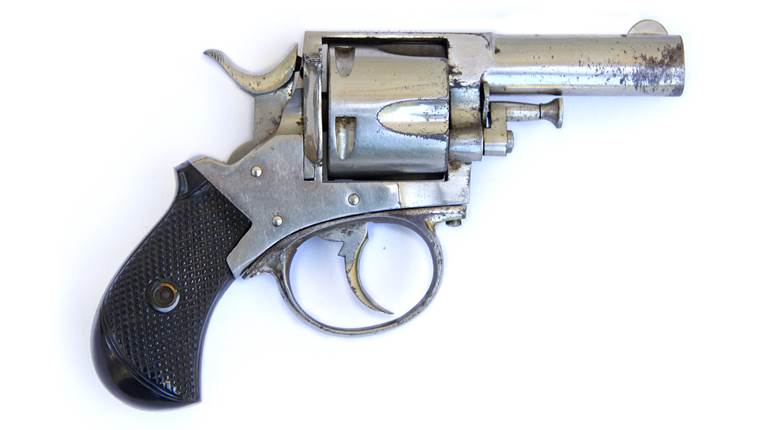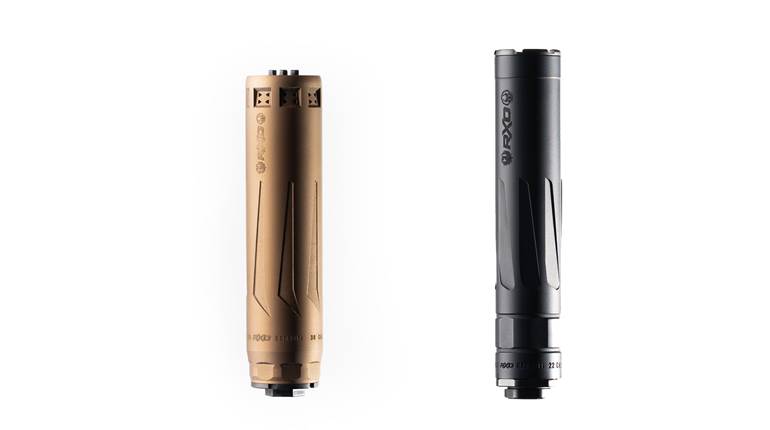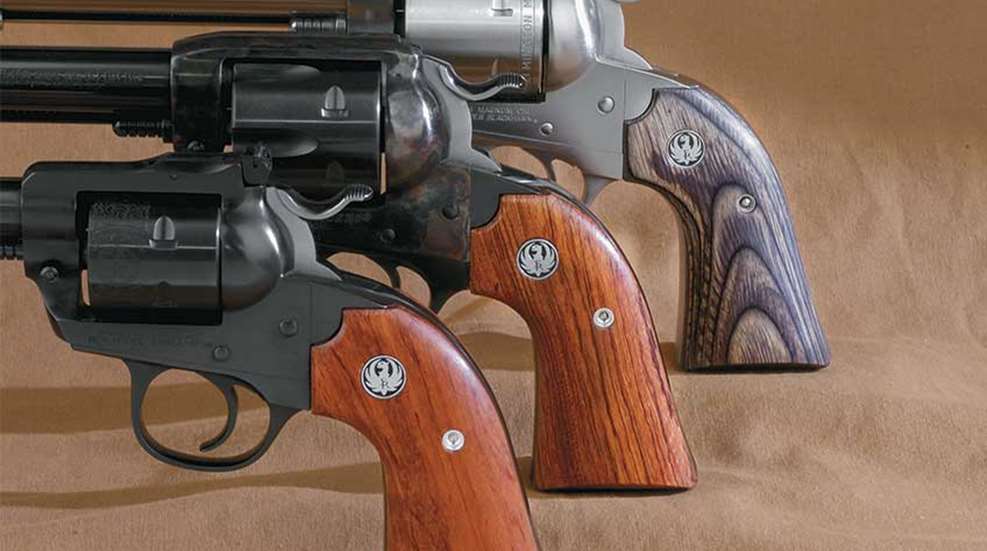
This article, "Ruger's Most Shootable Sixgun," appeared originally in the September 2003 issue of American Rifleman. To subscribe to the magazine, visit the NRA membership page here and select American Rifleman as your member magazine.
The plain facts of the Ruger Bisley’s introduction to the American shooting public are well-known. It came along in 1986, a variation of the New Model Blackhawk and New Model Single-Six revolvers. Initially made in six calibers—.22 LR, .32 H&R Mag., .357 Mag., .41 Mag., .44 Mag. and .45 Colt—the Bisley differed from the parent guns in the radically different shape of its hammer, trigger and most of all, its grip frame.
Ruger Bisley revolvers have been in production for several decades and still sell quite well. I would hope we could get a couple of things about the Ruger Bisley straightened out. One of them is why the gun persists; the other is where the design originated.
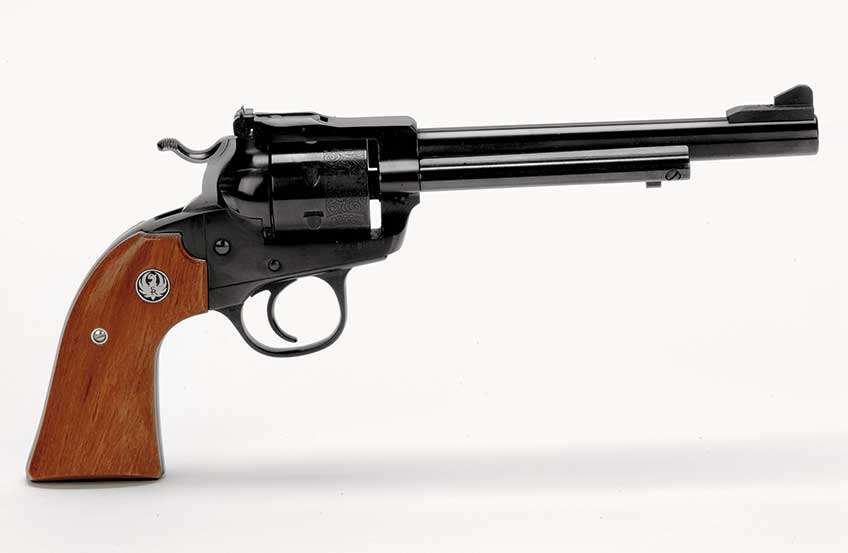
Bisley is the location of a shooting range in Great Britain. In the early days of the 20th century, the great handgun marksmen of the world gathered there to fire a variety of matches. International shooting always placed a heavy premium on pure accuracy, and it happened that the term “Bisley” became synonymous with superb performance. Colt Firearms, the giant of the handgun industry around the turn of the century, took note of this fact and developed a Bisley Model.
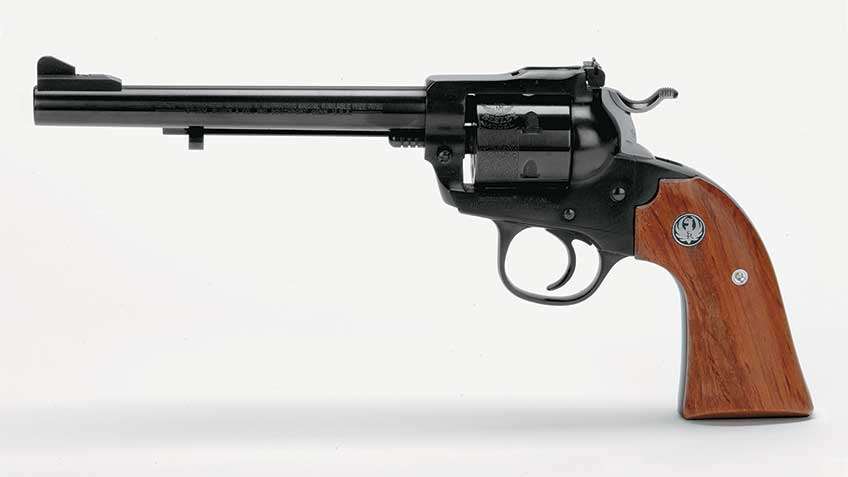
Colt Bisleys also used a much wider trigger with a more pronounced curve. This revolver enjoyed a fair degree of popularity on the competition circuit, particularly in the Flattop Target style. But a surprising number of down-to-earth working guys also bought this kind of Colt.
In the early 1980s, Bill Ruger decided to build a modernized Bisley, based on his well-established Blackhawk and Single-Six revolvers. In essence, Ruger wanted to create a revolver that did the same things for shooters of the late 20th century that Colt’s Bisley had done for competitors of the early 20th Century.
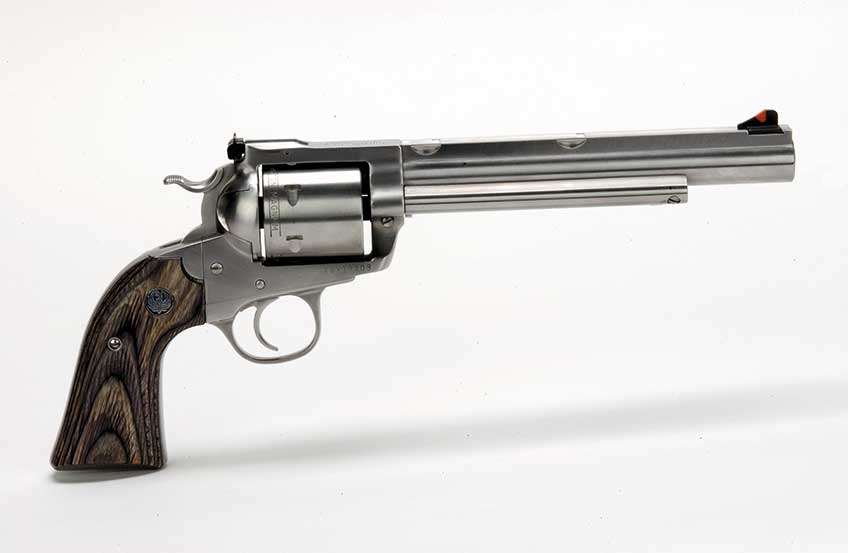
It is important to understand that the Ruger Bisley is not a replica of the Colt, but rather a completely updated and much improved revolver well-suited for field shooters who fire the magnum ammo of the ’80s and ’90s. The actual shape of the butt, hammer spur and trigger were specifically developed by William B. Ruger, Sr., and the engineers in his employ.
There is some additional confusion arising from guns that grew out of the early experiments of Elmer Keith and Harold Croft. Keith was an inveterate experimenter with heavy caliber handguns and knew that neither the original Peacemaker nor the improved Bisley displayed contours that were ideal for precise shooting with hard-kicking loads. After a number of attempts, he came up with an idea.
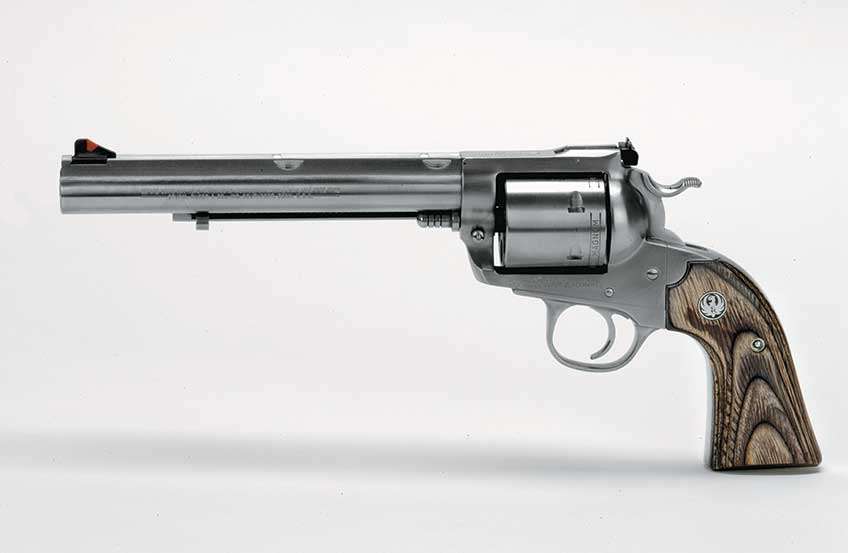
Although it is something of an oversimplification to describe it thus, Keith’s idea was to marry the Peacemaker frontstrap and a Bisley backstrap. This produces a butt that places the hand high enough to manage the recoil very nicely, but also facilitates cocking the hammer. In the process, you get a butt that’s hand-filling. With properly fitted grip panels that are on the thick side, the result is a grip that distributes recoil thrust over a major portion of the palm.
There is no record of which I am aware that tells us whether or not Ruger and his engineers knew of Keith’s design or were influenced by it. The fact that Ruger conceded the basic idea to the early Colts by naming his new revolver after them tells me he was after a modernized single-action target revolver that also handled severe recoil.
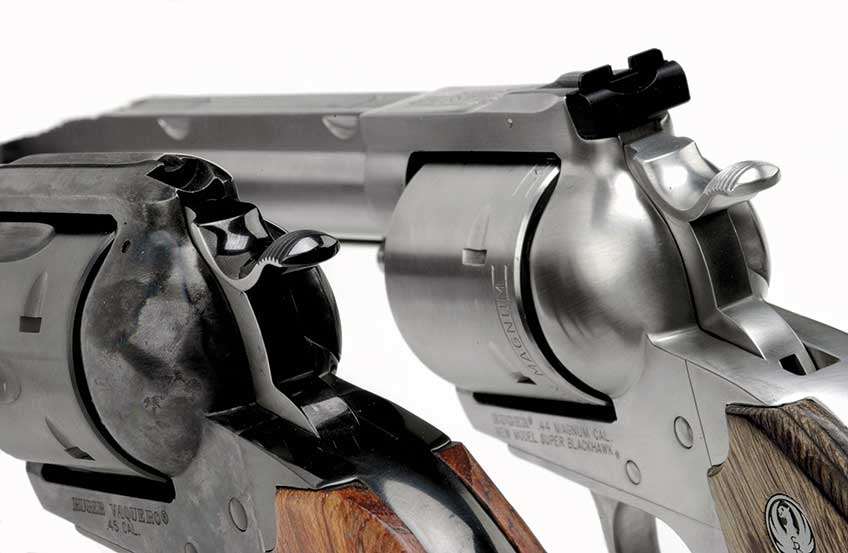
That is precisely what he developed in the superb Bisley model. After development, the various Bisley variations are really nothing more than the familiar Single-Six (for .22 LR and .32 H&R Mag.) and Blackhawk (.357 Mag., .41 Mag., .44 Mag. and .45 Colt.) models with Bisley butt, hammer and trigger installed.
Ruger’s Bisleys in the original six calibers each came with an adjustable rear sight, blue finish and one barrel length. For the .22 and .32 models, it was 61⁄2”. All others got a 71⁄2” tube. Since the 1986 introduction, Ruger Bisleys in general have enjoyed a steady popularity, although limited interest in the .32 H&R and .41 Magnums drove them out of the catalog in 1996.
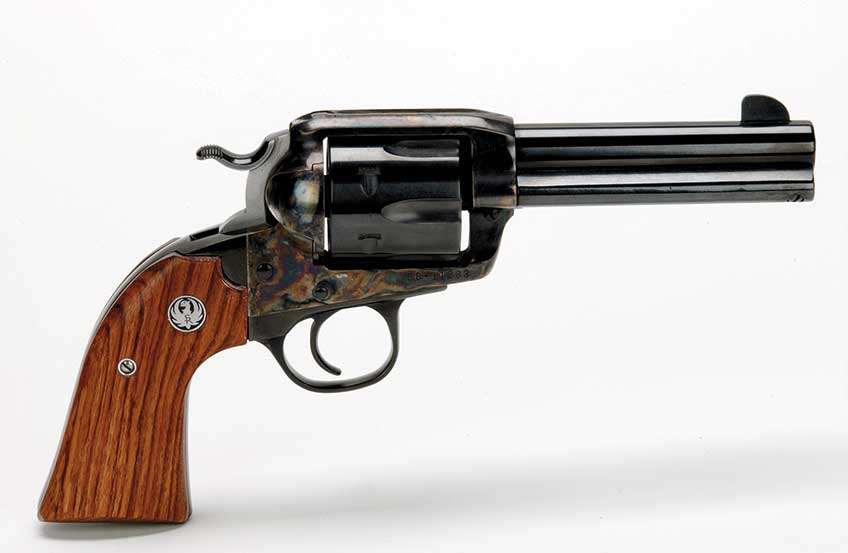
I have no data to prove it, but I suspect that Ruger Bisleys are like Colt Bisleys in the sense that used specimens often show signs of greater use than non-Bisley contemporaries. Both models were bought by people who fired them. Nonetheless, there is a waning prejudice against Bisleys on the grounds that they are unattractive. When compared to the typical curves and lines of a Frontier Model, I guess a Bisley does look a bit odd, but pretty is as pretty does. Ruger Bisleys handle beautifully.
In modern times, the Ruger Bisley revolver has been the basis for countless custom guns by the likes of Hamilton Bowen, John Gallagher and others. A standard Ruger Blackhawk or Super Blackhawk can become a Bisley when the appropriate parts are installed.
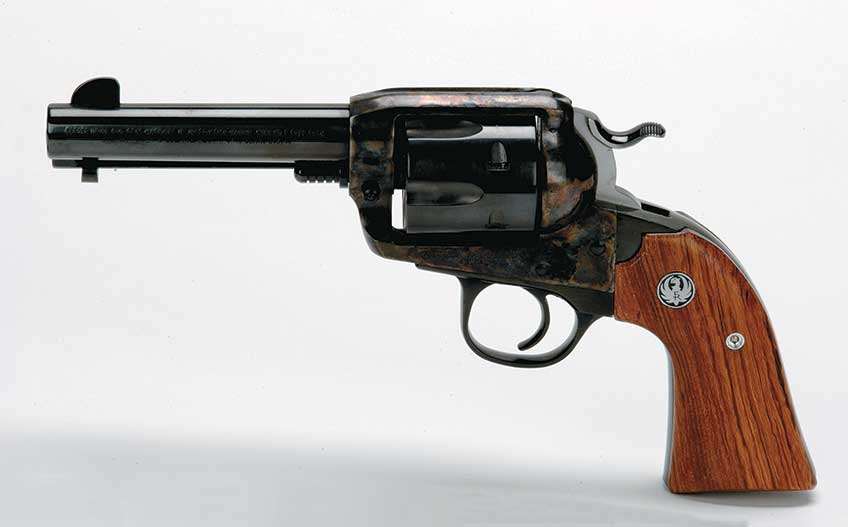
For a long time, this was a quick and easy way to get a Bisley with a barrel length the factory did not provide. A shooter might want to convert his 101⁄2” Super Blackhawk in .44 Mag. or 45⁄8” .45 Colt Blackhawk to the Bisley configuration. The interchangeability of grip frame parts between Bisley and Blackhawk usually works, but some fitting is occasionally necessary. The parts are available out of that magnificent Brownell’s catalog.
In actual shooting, the superiority of a Ruger Bisley Model over a standard Blackhawk is immediately apparent. The original Frontier-style grip works very well, but part of its design was contrived to make the revolver move in a shooter’s grasp. Upon firing of a stiff load, the muzzle wants to roll up in the hand, sometimes enough to be painful. Originally, this rolling action was helpful in that it placed the shooter’s thumb in a good spot to cock the hammer for another shot.
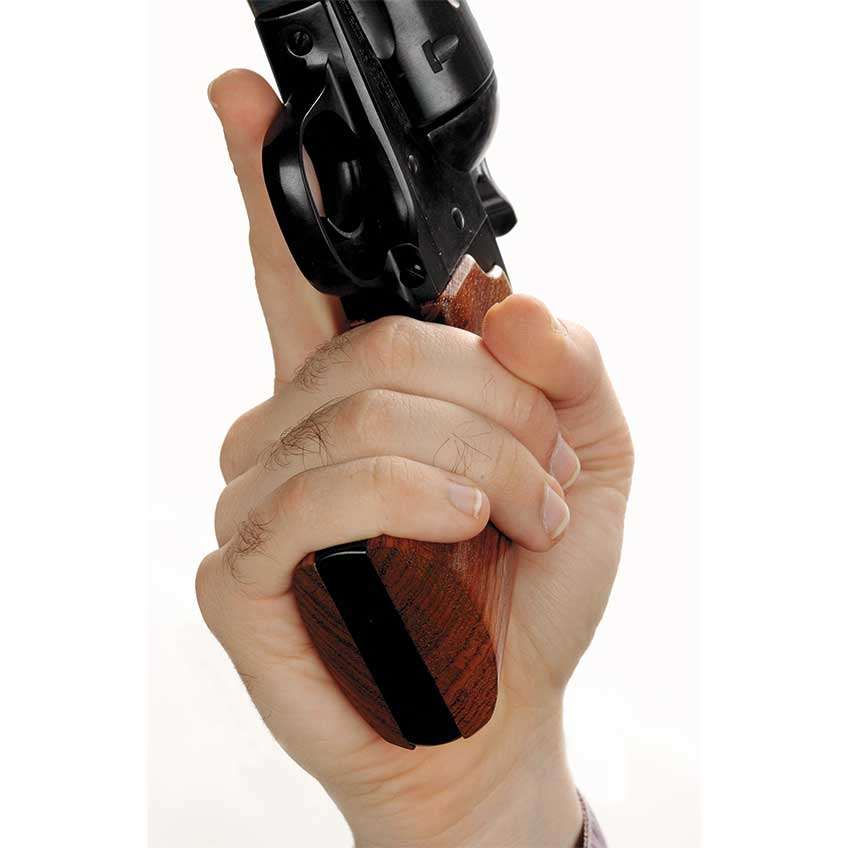
On the Bisley, the shooter’s hand is much higher on the backstrap. Since the grip is actually longer, there is room for all three grasping fingers on the frontstrap of the gun. These elements ensure that the revolver is more firmly under control and even more importantly, the shooting hand is holding it closer to the axis of the bore. When the recoil comes, it is much closer to being straight to the rear.
If you hold it in a strong grip, chances are good that it won’t slip or roll at all. And after recovery from recoil, the thumb of the shooting hand is perfectly situated to pull the hammer spur down and cock the revolver for the next shot. I can do it without shifting my grip, even with the heaviest .44 Mag. loads. It is a great system and, in my opinion, arguably the best of them all for the current crop of powerful revolver cartridges.
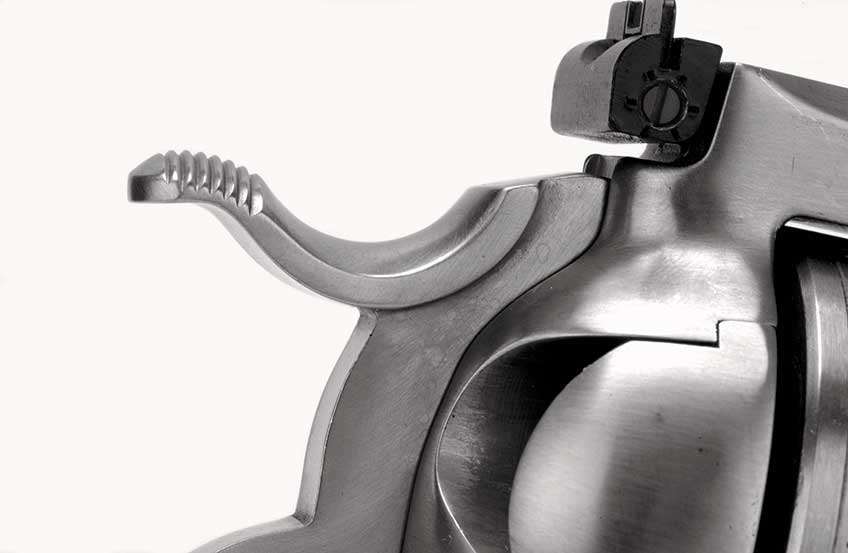
Until just a few years ago, the original Ruger Bisleys with adjustable sights were the only available options. But in 1998 Ruger brought out a Bisley-grip variant of its Vaquero Model. This was essentially a Blackhawk, which differed only in that it had fixed sights. Vaqueros came about as a result of the exploding popularity of the Cowboy Action shooting games. SASS shooters wanted revolvers as much as possible like the ones used on the Frontier, so Ruger obliged with a fixed sight variant called the Vaquero.
It achieved instant popularity, but some shooters wanted the extremely shootable Bisley grip option. Therefore, we saw the 1998 introduction of the Bisley Vaquero. It came in two barrel length options, 45⁄8” and 51⁄2” and three calibers—.357 Mag., .44 Mag. and .45 Colt. It also was made in either blued steel or stainless. The stainless option was highly polished to simulate the nickel finish of popular frontier models.
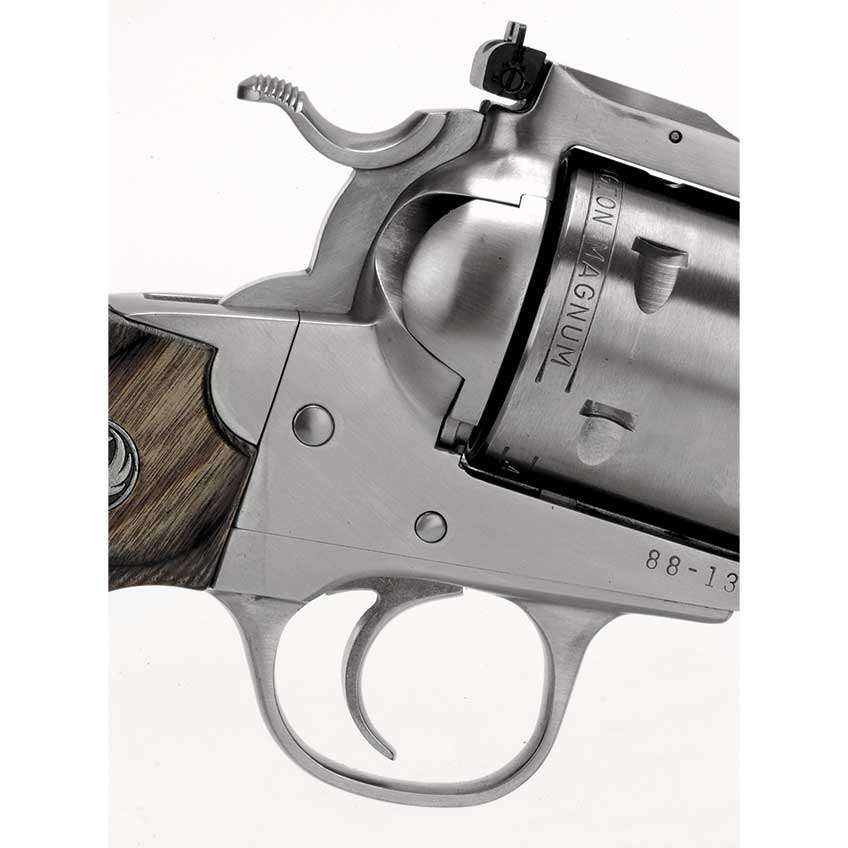
Cowboy action shooters use their guns hard. There isn’t any gun that holds up better than a single-action Ruger, because Bill Ruger built everything hell for stout. That’s why the Vaqueros and Bisley Vaqueros are so widely used in the sport. Their modest pricetag sure doesn’t hurt, either.
Ruger’s Redhawk and Super Redhawk series of revolvers are heavy duty DA/SA wheelguns intended for hard use in the hunting fields. In that role, longer-than-usual shots are sometimes necessary and that means mounting one of the new breed of handgun scopes.
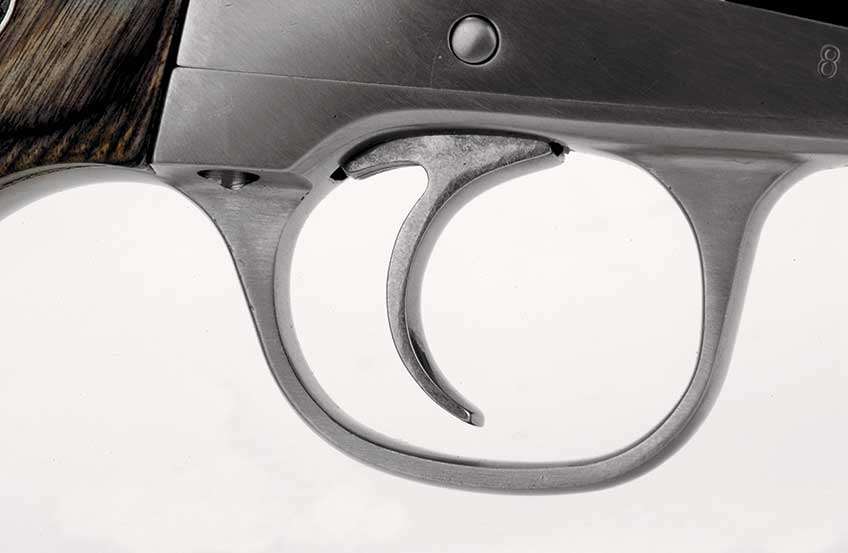
Most Redhawk models have barrels with integral top ribs that come with unique scallops on the sides of the rib to accept Ruger’s own scope rings. Some shooters like the single-action guns better, so Ruger introduced the Super Blackhawk Hunter Model. It has the ribbed barrel of the Redhawks. Just this year, Ruger announced a new variant of this model and it’s called a Bisley Hunter.
A brand-new Bisley Hunter was one of three Ruger Bisleys I obtained from the company to illustrate and shoot for this article. In keeping with the history of the Ruger Bisley, I also asked for a gun in the original adjustable sight configuration. This one showed up in .22 LR. I also wanted one of the fixed sights Bisley Vaqueros and a 45⁄8” blue revolver in .45 Colt caliber filled that need very nicely. It was an interesting trio of guns.
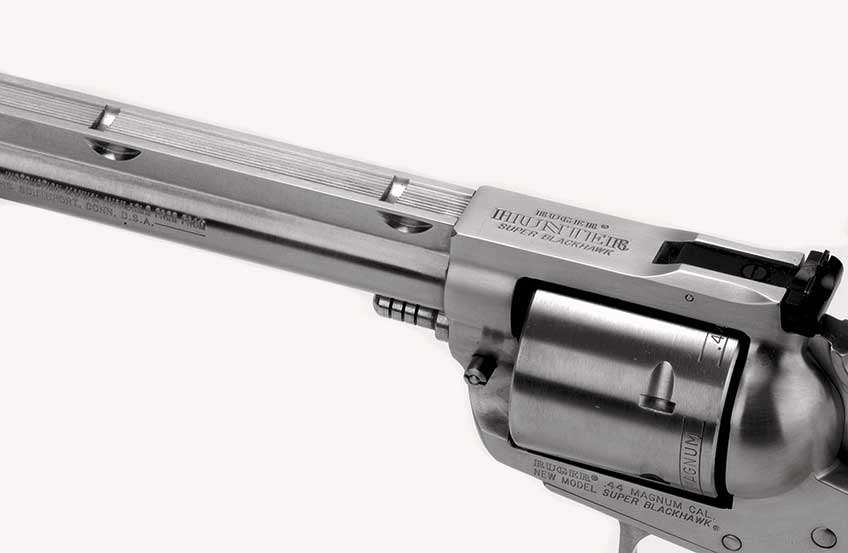
Please note that the Bisley grip frames on all three of these revolvers have the same dimensions and contours, although the main frame is different on each. For example, the .22 used an adjustable sight Single-Six frame, while the .45 Colt was a round-top, fixed-sight Vaquero type. The Bisley Hunter in .44 Mag. features the typical stainless steel Super Blackhawk frame.
Naturally, all were New Model guns with the transfer bar lockwork developed in the ’70s. Grip panels on the .22 and .45 are made of rosewood, while the .44 Hunter uses special laminated black and gray grips that contrast beautifully with the satin stainless finish on the gun.
My shooting evaluation was in accordance with American Rifleman protocol. With each gun, I used a Ransom Rest to fire a series of five, five-shot groups with each of four different loads. Targets were at 25 yds. and I used an Oehler Model 35P chronograph to determine the muzzle velocity of each load. Some pretty interesting results cropped up.
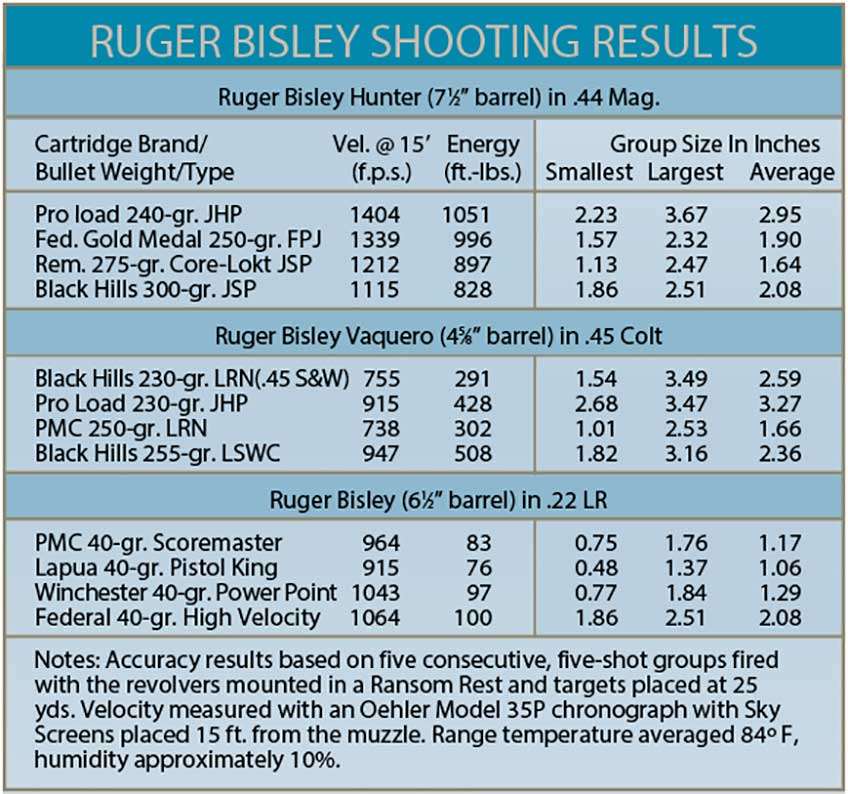
The .22 LR-cal. Bisley was easily the most accurate Bisley fired, averaging 1.40” per group. The best single group measured 0.48”, fired with Lapua Pistol King ammunition. The .45 Colt averaged 2.47” and delivered a really tight five-shot cluster measuring 1.01” with PMC’s Cowboy load. In the case of the big .44 Mag., the average group size was 2.14”, and the best single group was 1.13” fired with Remington’s 275-gr. hunting load. Naturally, further shooting of factory ammunition or handloads could improve their already excellent accuracy.
Bisleys in history have been a source of great collector and shooter interest. But Ruger Bisleys in hand are a source of even greater shooting fun. Plinking with the original Bisley .22 LR, competing with the Bisley Vaquero .45 Colt or hunting with the Bisley Hunter .44 Mag. are all fine uses for the late Mr. Ruger’s most shootable sixgun.














